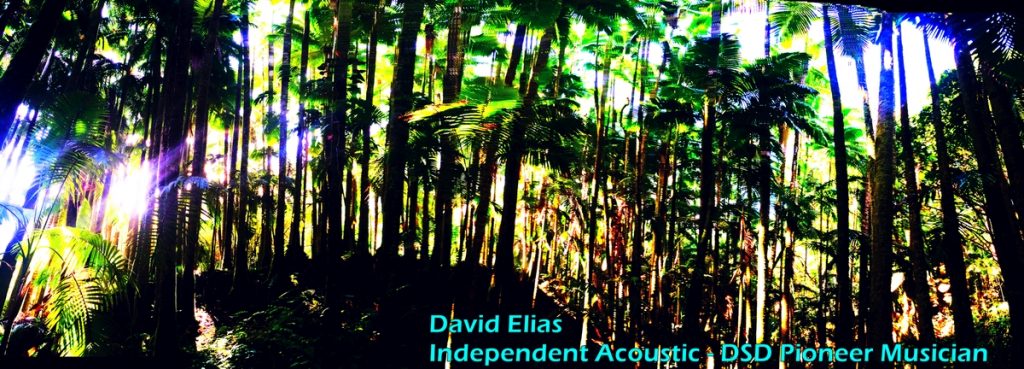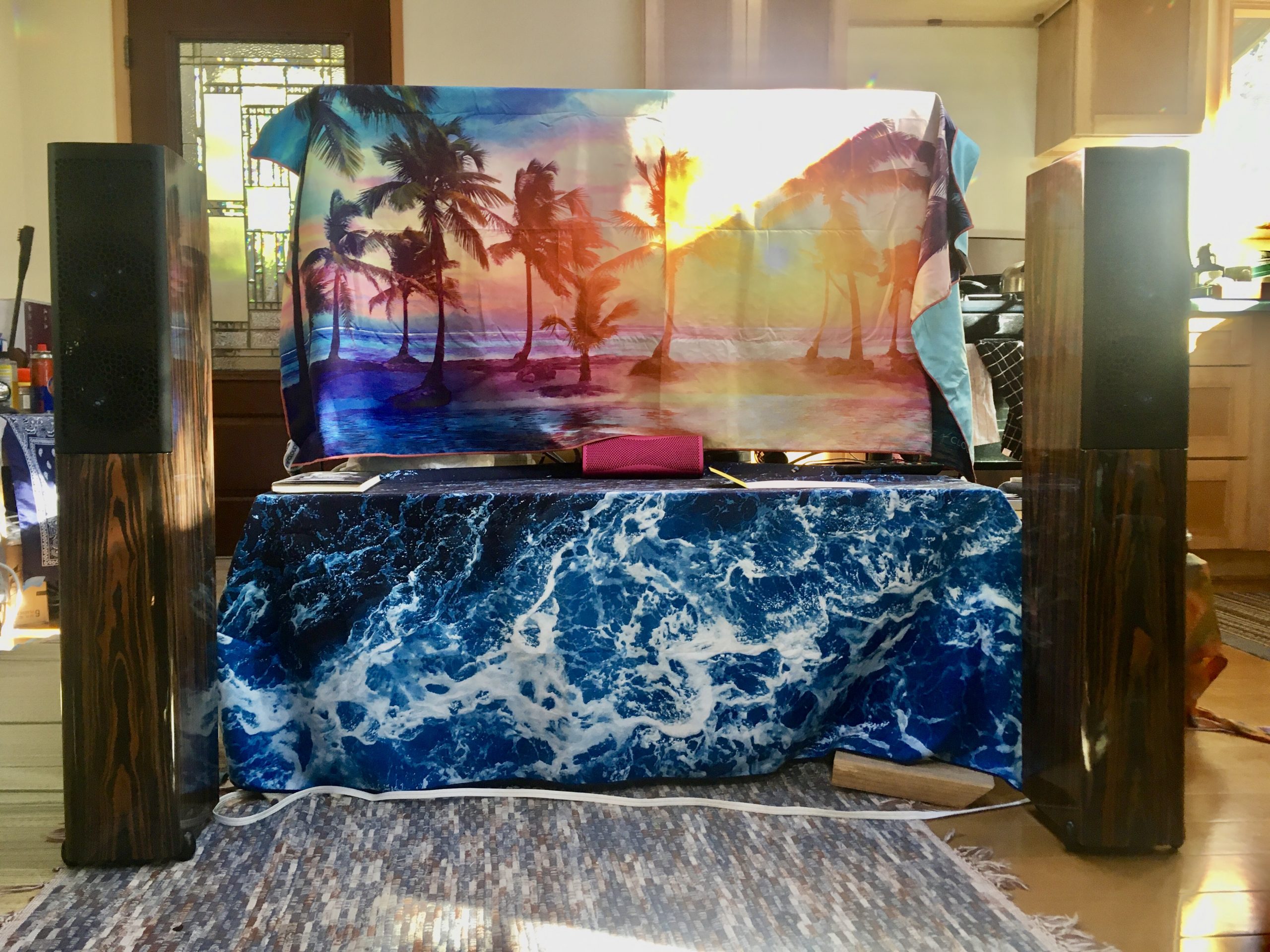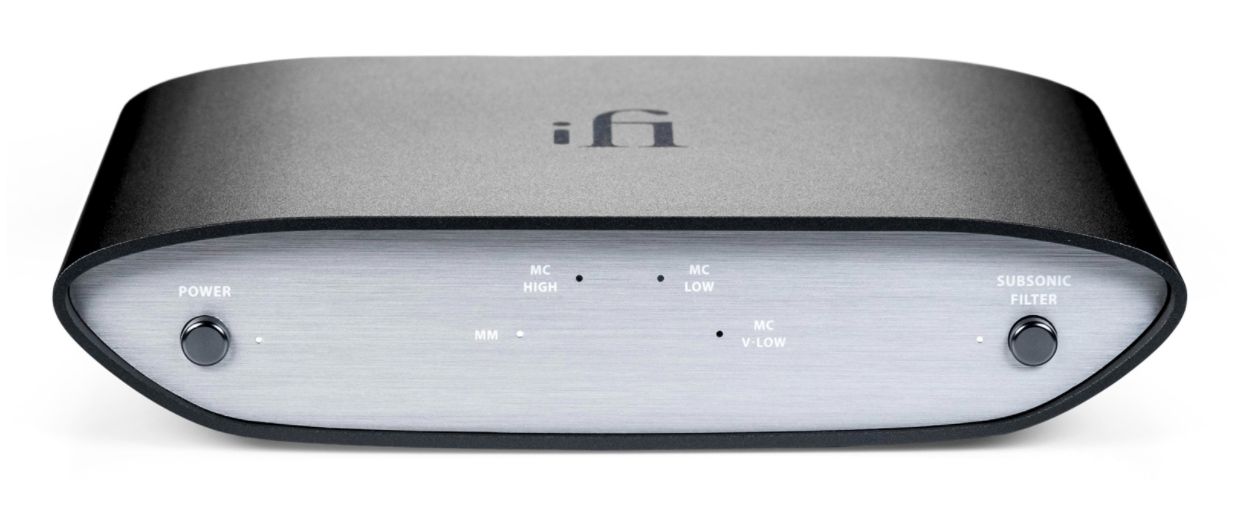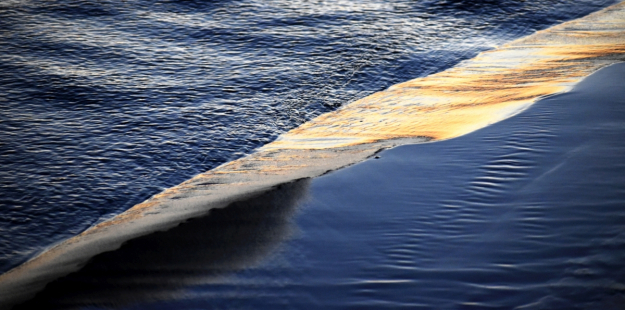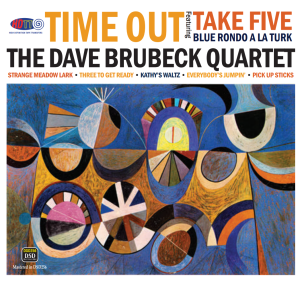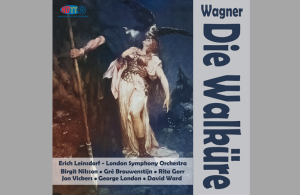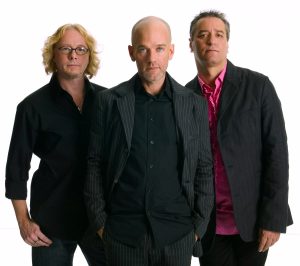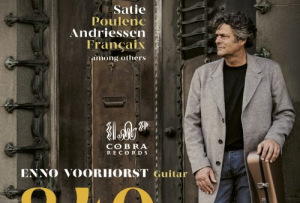
The year continues to be a trial for us all in balance and direction. I hope you are making the transitions needed or wanted in the most healthy and happy ways. September 22nd marks a nice day in our planet's orbit to feel less wobbly and angular and more direct and equally distributed. Happy Equinox (Fall Up Topside Spring Down Under)!
New Music and Videos
Between Bandcamp and YouTube I am still releasing new singles and a few videos. If you don't follow or subscribe to either (please do!) you probably don't know about them so here are the links to each.
https://davidelias.bandcamp.com (Thursday (uke))
https://youtube.com/davideliasvideo (Thursday, Extra)
All my new stuff always comes out on Spotify (MP3 to 320), TIDAL (CD and MQA), Qobuz (CD and Hi-Res), and all the others as well.
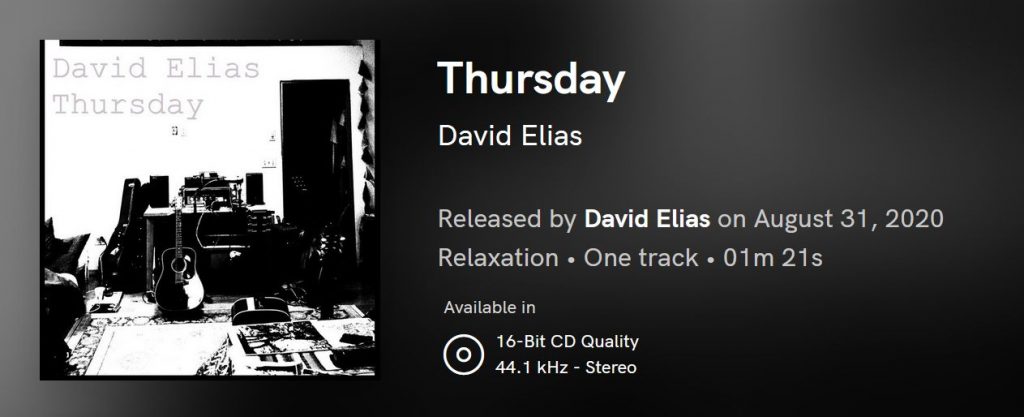
New Gear
I've redirected some of my listening pleasures back to my good old vinyl. There's lots to hear there, some of it old and very familiar, and then some unsuspected new listening ahas on the analog played in a nice quiet room with a high peaked ceiling. What I realized is that I've been hugely focused on hearing hi-res and overall digital recordings for no less than 20 years. I was very late coming to the CD challenge as a listener, not until the early 90s, and still disfavor its native format far more than anything, even MP3, yes it's true. But vinyl sales in the US just eclipsed CD sales on the national barometer for the first time since the 80s, so the proper balance there is returning as well! Hear Hear!
But the renewed listening to the LP's through my near-field Hafler speaker setup left something to be desired on the bottom registers.
So to kick things down a bit more in my music play space, I added a very inexpensive but surprisingly effective and in-sync 10" subwoofer by Polk. My tried and true small near field Hafler M5 Reference Monitor 2-way stereo setup has served me so well for almost two decades now, but they don't dip below 70Hz. Human hearing measures down to 20Hz.
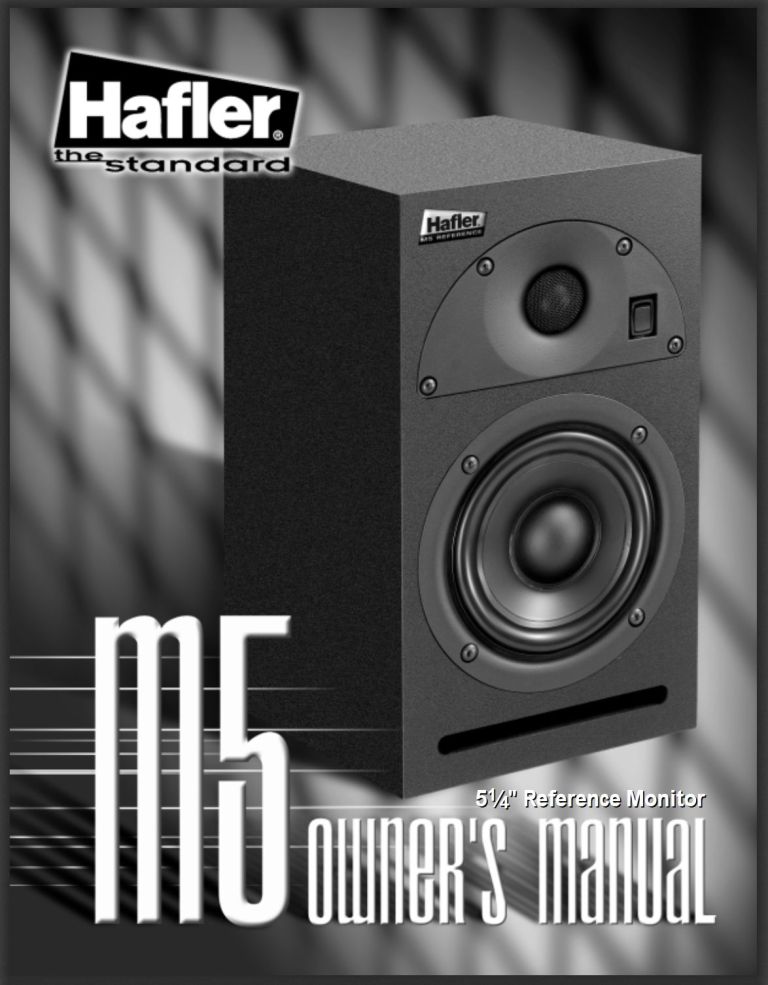
My wood floors and wood ceilings have left me wanting a bit more oomph in the right places of any song for quite awhile. It's that finite underscore of both the sound and the feel that's been missing. I know what it is in theory and insinuation while I'm listening, and it's been mostly ok even though I haven't quite felt it hitting me squarely without my larger speakers in the room. (My killer Monitor Audio Gold Series 5-way speaker setup is on hiatus these months; if you know anyone interested in that setup they should contact me and inquire.)
The Haflers are fed via the iFi Audio Pro iDSD preamp/DAC/magic machine ($2499) that among many other things can remaster to DSD1024 any music stream it receives outside of DSD256/512, which it leaves untouched, or MQA which it fully decodes up to 24/384k. So DSD Remastering includes great improvements on MP3 streaming at any bitrate from Spotify or anywhere else, as well as streaming 16/44.1 or higher lossless streaming from TIDAL, Qobuz, or anywhere else, including whatever I play over WiFi from my JRiver Music Center (v26) as CD, Hi-Res, MP3, DSD, or MQA.

DSD Remastering can be toggled on as 512 or 1024 or turned off in real time by pressing in on the Filter knob. But why leave the compressed/lossy PCM rates unimproved? No need. Remastering creates a much more natural space and sound stage around otherwise edgy and thin sounding tracks. It also completely enhances the full sound of instruments playing and people singing by giving them the resonance and timbre they had before being lost and squashed in the PCM ADC brick wall filter torture chamber. Don't take just my word for it. I've switched DSD Remastering for the Pro iDSD on and off for others listening who had no HiFi expertise or Hi-Res acumen to their music loving résumés, and invariably their instant conclusions have been that DSD Remastering is the preferred way to listen. Don't Touch That Dial!
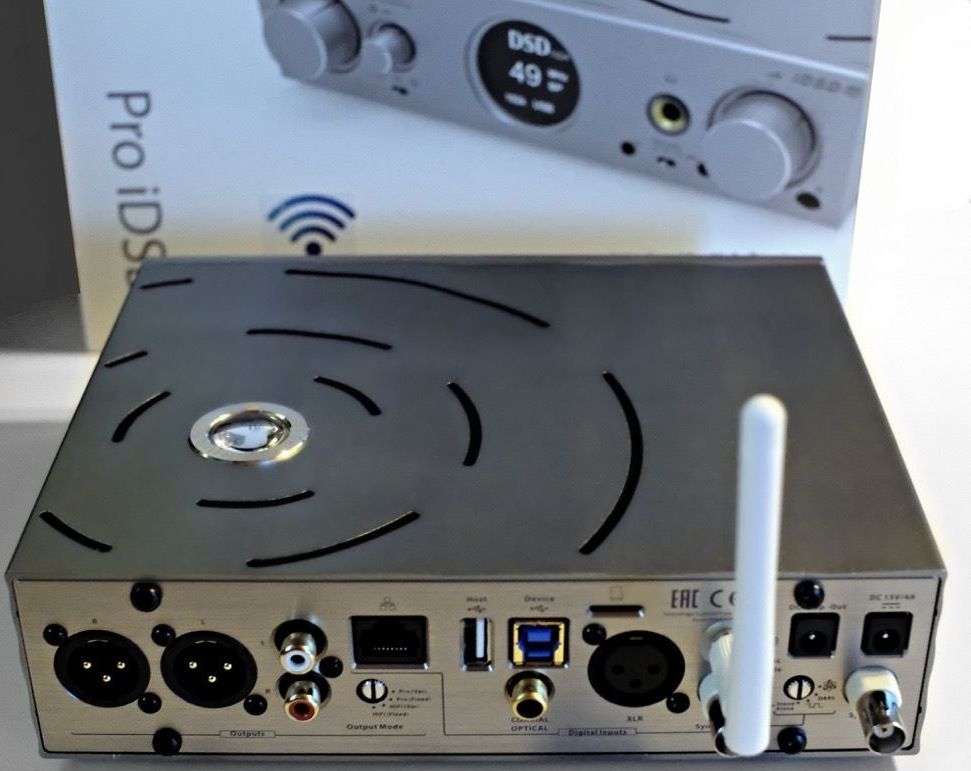
A selectable PCM filter is also applied to the stream before conversion to DSD. Usually I have this set to the iFi+MQA Ltd. derived GTO (Gibbs Transient Optimized) pre-ringing echo removing option, but sometimes go with just Bit Perfect (BP) or Bit Perfect+ (BP+ no high frequency removal) choices for the cleanest, unaffected sound reproduction.
This controlled restorative setup delivers some serious highly accurate and warm natural sound no matter what the music source is or how it gets there. Coax, Toslink, RJ45 IP, USB-B (includes DSD512 to analog with Windows drivers), XLR digital, BNC, Micro SDHC, Just think about that for a second. I don't think you could suggest a digital music source that the Pro iDSD doesn't support, and NONE of it is via Bluetooth—just wires, chips, or WiFi. As long as it's a decent quality recording or at least has a whole lot of S-O-U-L in it, the Pro iDSD can play the heck out of it. That's why I've written it up on Positive Feedback as "The Ultimate Media Refactoring Vending Machine."
From the filtered/DSD Resampled iFi Audio preamp (digital or tube or tube+ with natural THD), the analog music can be heard through headphones (6.3mm TRS/3.5mm unbalanced/4mm balanced) or routes to my NAD Multi Channel 906 amp and off to speakers in the house.
Back to the Sub
The PSW10 Polk 10" sub is connected using Y-cables (RCA and not included) that route the audio from the Pro iDSD preamp/DAC source to both the subwoofer and directly to the NAD amp. The Polk sub puts the kick drum pedal and lowest bass notes directly on the floor. My cabin home is built on post and pier with the floor anywhere from 3-4' to 6-7' above the sloped lava and minimum soil underneath. With the PSW10, the drum's foot pedal's kick radiates underneath.
I set the cutoff frequency at around 60 and keep the volume knob way down such that on dry and more quiet passages I can't hear the subwoofer at all (but can feel it when I lay a hand on top of the laminate). Its frequency bottom splits the difference to 20Hz with the Haflers and gets down to 40Hz. Not rock bottom but well more than $129 closer.
So when the rhythm guns in the music do come out, the Polk is a steady and ready ally marching right along with the beats and detailing those lowest notes and percussive impulses in warm but crisp ways. It's a delicate balance to dial in properly for your ears, but well worth the time and trials.

The PSW10 Phase switch is also very subtle. I am leaving it at 0 degrees even though I still try 180 every once in awhile just to check. An Auto Power switch allows the PSW10 to detect no music and switch to standby mode which is around 5W. This works fine for me though I've read about others having problems with it. I tend to unplug things not in use anyway to save watts generated from the solar PVC panels on the roof.
(Do you know how many kilowatt hours a month you use and what things like your refrigerator, hot water, audio gear setup, microwave, not to mention air conditioning cost you in watts each day/month? If you don't you really might want to investigate, you can save tons of energy and $ by some basic monitoring. It's easy to measure. Look for a little gadget called the P3 Kill A Watt meter. It can tell you voltage, amps or watts on any device or power strip plugged in. It can also be a running meter on watts used where its been plugged in so you can measure usage over a day, week, whatever. The planet will thank you too.)
Having low frequency sonic subtleties implemented well pays off when the light tap or heavy stomp is suddenly present like Lee Sklar on JT's "Close Your Eyes" or JJ Cale's "After Midnight." At these times you will righteously hear and know that you have a subwoofer doing what it is supposed to. Without it you really do leave it to the imagination, which is not a strong selling point in this context 🙂
I've always thought that a subwoofer might take away from what I am focused on hearing, plus what my mind-ear imagines when I'm listening. I've heard subwoofers implemented very wrongly, usually overdriven, in the past, in places including audition rooms and bars. So I was ear/head shy to try it at home. I'd always prefer to have my ears/brain fill in those low frequency blanks with what I felt I knew was really there, rather than risk any assortment of corrections or augmentations that have some unnatural Space Invader or Hollywood induced caravans of trucks rolling by effects going off in my ears, or otherwise muddle with the heart of the song I'm hearing. No I'm not a DSP believer either but may try to address that confirmed disbelief with a newer project looming ahead.
The PSW10 can be properly setup to give my mind-ear a rest and let my ear-ears just relax and listen with a bit more solid feeling in passages where I tend to tap both feet. At $129 including free shipping to Hawaii I'd say it is a sonic gold mine. There is a 12" version available as well.
So Where is Vinyl?
The Pro iDSD gets fed music in different ways. One is via WiFi (not Bluetooth wireless mind you, but my router's WiFi as audio over IP). The music stream can come from a laptop (Internet or local source), a Smartphone (Internet or local source), or any other music playing device that can get to Airplay or UPnP and connect WiFi with the Pro iDSD. Nothing happens to the audio signal as WiFi. It remains bit perfect, unlike Bluetooth, where there are 99 different lossless standards (yes an exaggeration, but just give it time) that juggle for retaining the audio quality perfectly.
Then there is the distance your player (laptop, tablet phone) can be from the preamp/DAC to play Bluetooth without stuttering or dropping altogether. The extended WiFi range is not limited like Bluetooth's advertised 30 feet maximum, which is very often even less with walls and other obstacles. I have music playing wherever I have WiFi signal, including outside in the garden and forest where my iPhone usually goes with me. iPhone by the way can direct playback from my entire 1TB music library located inside on a shared server or NAS sending streams again through WiFi into the Pro iDSD, all using JRiver's JRemote free app to direct the music.
This is another lengthy subject to write you about sometime. Would you believe the same JRemote app goes with you anywhere in the world and can still access that same complete archive library of music at home via the Internet (WiFi or Cell Data 4G and higher) and stream bit perfect CD and higher rates? It becomes your personal music cloud or one you care to share with friends. It can also stream your saved DVD ripped movies to you wherever you are, and you might screen mirror them to a huge LED. I'll stop now.
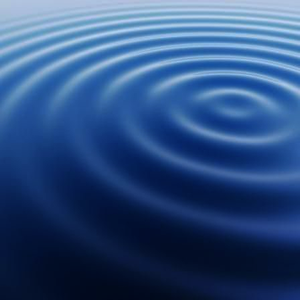
Here's the Vinyl
If I'm not streaming from my JRiver library, Spotify, TIDAL or any online radio, I can drop the needle on a spinning disk in my Vestax turntable that has its own preamp, or can send audio signal at line level to a turntable preamp like the one I just got from iFi Audio to evaluate: the iPhono3 Black Label.
In the recent past I had gotten the best sound off my records by sending the Vestax groove sounds to the iFi Audio Micro iTube2 preamp/buffer I've had for maybe 5 years now. I've mostly used the iTube2 as an outright analog volume knob controlled preamp. While it is not a turntable preamp per se, its pure analog tube juice sounded better than what Vestax could do on its own. Mostly for me the iTube2 has been a perfect staging preamp for sending any audio to my amplifier and gives me the manual control of the volume.
Then along came the recently released iFi Audio iPhono Black Label (BL, $999) which is bundled with their iPower X special AC adapter. These electrically super-quiet devices combine to deliver a very very clean vinyl playing reproduction, no matter what kind of turntable stylus you have (Moving Magnetic, or Moving Coil). There's a nifty lookup/calculator tool online for you to figure out your cartridge specs to set the DIP switches on the iPhono3 correctly. If you get stymied setting it up, there's online support to help you nail it down. While there are lots of DIP switches on the iPhono3 BL, don't get too scared, as you won't need to use them all depending what type of cartridge you have.
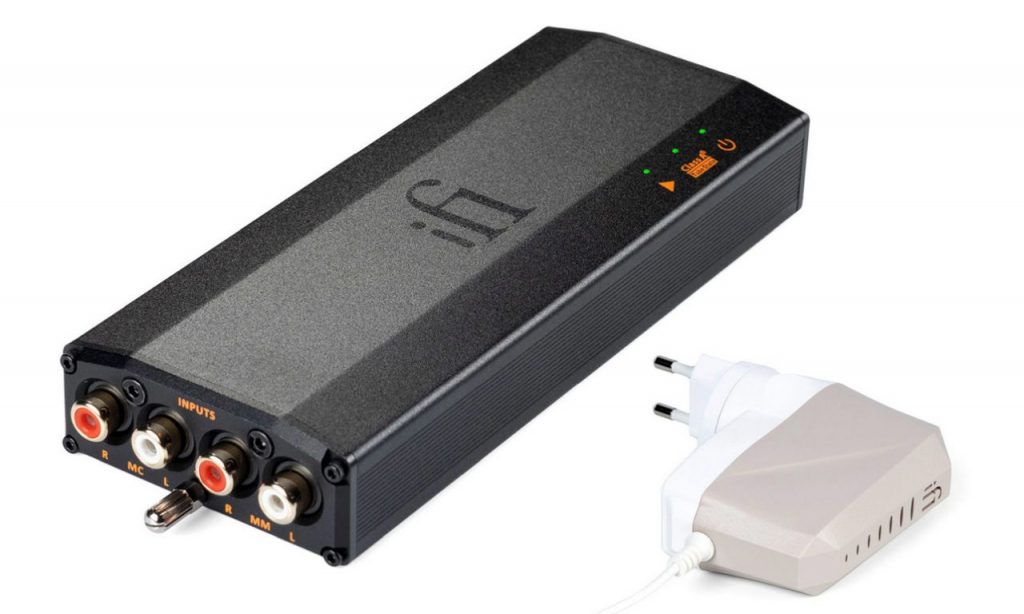
By approaching the distortion problem from both sides (not adding any circuit noise from the Class A tube preamp, and removing any from the solid state circuitry) the iPhono3 BL can give your ears everything that comes off the vinyl spinning, and absolutely nothing else. The four decades of research that provide iFi Audio with a Class A solid-state tube solution where "the key is not to add distortion, but to avoid certain types of distortion" is also accompanied by a sub-sonic filter for warped records that can generate signals <20Hz that the speakers have to deal with unless it's removed. Voila. iFi removes it.
If I know anything at all by signature sounds, I know my record albums, many of which have been with me longer than nearly anyone else I know, and dating back to the good old turn-of-the-decade on both sides of 1970. Sorry if you thought I was just a flash in the pan music lover! What I hear from the new iFi phono preamp is my favorite familiar sounds from the likes of anyone from Norman Blake to Volker Kriegel, Nektar, Traffic, Iggy Pop, Specials, John Renbourn, John Lennon, JJ Cale, Costello, Little Feat, and a few hundred others.
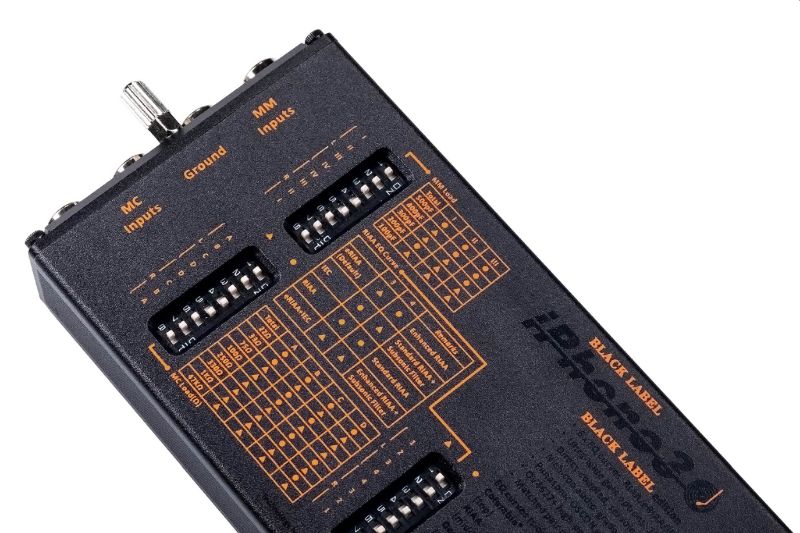
For us audio noodlers and doodlers the iPhono3 has DIP switch controlled settings for the variety of different and competing LP equalization standards (22 total!) created over the decades by different record labels going back to RCA in the late 40s and then crossing oceans and continents into Europe. It was not until the 1970s that the world music industry seemed to land on an international adoption of the EQ curve standard set by the RIAA.
So depending on where and when your record collection harkens from, you can dial in the proper equalization profile to fully replicate the sound of your albums as needed based on the record label and date. If that sounds like more of a giant headache than a necessity, you don't have to do it at all, just leave the default RIAA alone. Most turntable preamp gear provides none of this scrutiny or varied accurate configuration. I tested different EQ curves on the same record. Some yielded sonic differences worlds apart (usually with very bad results except for the right EQ) as far as the basic bass/treble ratios. Other albums were probably more flat in their mixed EQ and so demonstrated less variation.
Solid solid solid playback from the LP archives. Amazing detail to work with and listen to. For me it's not exactly about how pristine clean the sound is—though quiet when needed is a vital sound too—it's about how real and alive is the sound in the room, and I'm not talking about volume. I have some very thoroughly worn copies of probably some of the same legend albums as you, but I also have some very clean copies of others. Regardless of the wear on any given disc, everything I played in my setup stood perfectly well defined and fully revealed on its own. The sound casts no shadow anywhere, and just gets delivered across the room or into my headphones. Talk about adventure!
It's direct and balanced and hugely comfortable to listen to.
Be Well & Happy Equinox,
...DE
https://davidelias.com (DSD64 & MQA Hi-Res FLAC Masters)
Go here for David Elias DSD 128, 256 & 512 Masters…
https://davidelias.bandcamp.com (All MQA Masters, any lossless format and streaming)
https://youtube.com/davideliasvideo (Self-Produced Videos)
https://art-of-listening.com (Hi-Res Music Blog)
PS – If you would like some nice scenery from Hawaii to look at online visit my iPhone SE photo blog pages. This got a renewed look the other day and dates back quite a many years now as I take regular and frequent walks on different parts of the Big Island.
PPS - For any of you who have attended any of the past 3 annual Ferlifests in San Gregorio, we are looking forward to presenting the 4th Annual Ferlinghetti Insurgent Art Benefit for KPFA based on the insight of local SF beat poet hero and City Lights founder/publisher Lawrence Ferlinghetti (last year he was 100!). Stay tuned for info on a virtual concert telecast of the event being planned for later this year. (www.sangregoriostore.com)
